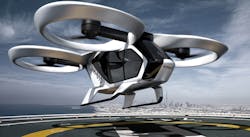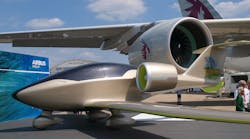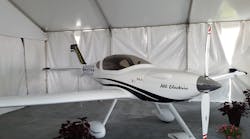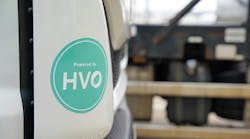Electric mobility is already in our lives and now we hear almost daily about new "electric" aircraft even from unusual and untypical aviation events. Most of the new aircraft look futuristic and let us dream about hard to believe freedom of air transportation. The majority of these new aircraft are different, exciting, innovative, and they have one common ground: they are more or less electric propelled.
As soon as you think you have understood the purpose of an airplane a new variant from another - widely unknown - competitor is there. The borders between currently existing categories are vanishing and even the likes of Airbus and Boeing are taking advantage of start-up companies – some non-aviation.
This is leading to a variety of new aircraft families. They may be distinguished based on the type of lifting surfaces (fixed and rotary), type of propulsion architecture, and propulsion system.
Why the Rush, Why Now?
The aviation industry has a problem and has become the victim of its own success. Air transport is continually growing and adds to environmental harm if further fossil fuel resources are used. The industry has recognized that best results could be achieved by improving the sustainability of air transport, especially now when travelers are becoming increasingly aware about the finite resources of the fossil fuels.
Engine makers are also actively contributing to reduction of fuel burn in their existing engines and are increasingly working on new concepts of open rotor engines and geared turbo fans.
Is Electric Aircraft a Solution?
Electric energy seems to be the only ecological "fuel" alternative especially if used to drive electric motors for propulsion. Combining existing technological resources, achieved knowledge, and thinking out of the box could radically change our way of designing air transport tools.
It seems that we are living in one of the best times ever for aircraft designers. They are able to benefit from sources which were not available just a decade ago. Many new tools are now available like computer chips and sensors, batteries, electric motors, and software which have become faster, cheaper, and smaller with some coming from the automotive, smart phone, and consumer drones fields.
New aircraft families
In the last issue of AMT, we provided you an overview of new electric aircraft. In this part we'll attempt to distinguish between some of these new families of electric aircraft based on the choice of lifting surfaces.
Fixed wing aircraft with electric propulsion
This category of aircraft includes both conventional aircraft that have been electrified, and newly designed electric or hybrid fixed wing aircraft. The classic use of fixed electric motors spin a single (or twin) propeller. They are simple, sturdy, easy to build and don't allow vertical takeoff and landing (VTOL).
Aero Electric Aircraft Corp. The two-seat Sun Flyer trainer together with the bigger brother called Sun Flyer 4, four-seat, are both designed from scratch for electric propulsion.
NASA X-57 Maxwell project: A normal twin engine aircraft like a Tecnam P2006 is being converted by replacing the original wing with a long wing fitted with 14 electric motors – 12 on the leading edge for takeoffs and landings, and one larger motor on each wing tip for use during cruise.
Alice Commuter from the Israeli company Eviation presented a scale model in Paris last year designed to take 9+2 passengers 600 miles on a speed of 240 knots. The brand new design should get airborne by mid 2018 and is using distributed propulsion with one main pusher propeller in the tailcone and two pusher propellers at the wingtips.
Pipistrel's Panthera Hybrid is a good example of a fixed wing general aviation airplane where the original Lycoming engine was exchanged by a combination of Rotax 914 gas engine and a Siemens electric motor – a beautiful example of a hybrid concept.
Airbus e-FanX: Airbus, Rolls-Royce, and Siemens have formed a partnership which aims at developing a near-term flight demonstrator which will be according to Airbus a significant step forward in hybrid-electric propulsion for commercial airliners. A 2MW (mega watt) serial hybrid architecture on board consists of 2MW electric turbine motor, 2MW energy storage, and 2MW generator that work together. More on Airbus and this topic in the next edition of AMT magazine.
An example in the commuter market is the Zunum Aero project a 19-seater, optimized for a 700-nm range - a startup financed by Boeing Horizon X and JetBlue technology Ventures which is supposed to fly in 2019/20. To be flown piloted or as a drone, its series-hybrid powertrain was designed for an eventual transition to fully electric, without requiring any mechanical retrofitting. More on Boeing and this topic in the next edition of AMT magazine.
Rotary Wing, e-helicopters, Multicopters
A flood of newcomers to the market are intruding with new VTOL designs into this previously classic helicopter segment. This segment includes electrified conventional helicopters and new helicopter-like aircraft.
Many new designers and small startups (specially in the experimental world) are presenting traditional style helicopters with classic helicopter architecture engine, main rotor, and tailrotor but powered by an electric motor.
The German Volocopter 2X was launched in 2017. This VTOL aircraft is purely electric and is capable of carrying two persons. Its 18 electric motors give high failure tolerance and the ability to fly emission-free and with low-noise.
In January 2018 Bell Helicopter revealed the cabin model of an electric, self-piloting urban air taxi. Bell’s initial propulsion technology focus is expected to be hybrid electric with an eventual goal of fully electric. The propulsion system remains a secret for now but a sort of a multicopter design won't be a surprise.
Vertical Takeoff and Landing (VTOL)
The tilt-type architecture is right now very widely used by many aircraft designers and allows pretty radical designs which are almost all vertical takeoff and landing (VTOL) aircraft which is achieved in different ways.
Manufacturers combine different properties of fixed wings for cruise and multicopters for VTOL properties by tilting either only the propeller or tilting engines and propellers and sometimes tilting even wings (or portion of) together with complete powerplants. This requires changing the direction of thrust from hover to cruise. There is a need to design propulsors for a wide range of operating conditions (hover and horizontal flight).
In some cases it is difficult to categorize these new aircraft as they are often creating their own niche such as the XTI Aircraft, Trifan 600 and Airbus Vahana.
Motors and propellers are vertically installed, constantly creating lift, with no "mode change". Multicopters are VTOL aircraft, simple to design and build.
The American electric-drive truck manufacturer Workhorse showcased a hybrid-electric vertical-takeoff-and-landing (eVTOL) aircraft called SureFly in mid 2017. The octocopter builds on Workhorse’s development of the HorseFly delivery drone, has four arms with two electric motors on their end. It is powered by a nondisclosed 200-hp turbocharged combustion engine which drives a generator, and which is backed up by a dual-battery system. Motors and propeller are vertically installed with no "mode change".
Aurora's eVTOL is a prototype of a new form of urban mobility using separate propulsion systems (motor and propeller) for hover (takeoff, landing) and cruise eliminating mechanical complexity but still achieving cruise speed of 100 knots at 1 ton weight and approximately 500-pound payload.
Aurora XV-24A LightningStrike: This VTOL assembled with combat helicopters is now an experimental UAV created by Aurora and partners Rolls-Royce and Honeywell. XV-24A should achieve 300 knots cruise and have useful load close to 40 percent MTOW. To achieve this, a complex coupled aerodynamic aircraft was designed using 24 motors with enclosed propellers and 48 nozzle flaps plus tilt actuators on front and rear wing.
XTI Aircraft, TriFan 600 is an another example of an all-new design, conventional looking, fixed-wing aircraft with three ducted fans; two of them rotate approximately 90 degrees. The three fans will be powered by a not yet disclosed and dislocated turbine/generator unit. The American company and its CEO Robert LaBelle are saying that the six-seat airplane will have the speed, range, and comfort of a business jet and the ability to take off and land vertically, like a helicopter. Using three ducted fans, each driven by two Siemens electric motors, it should travel at over 300 miles an hour, with a range of up to 1,200 miles.
Lilium is a VTOL-jet designed and manufactured by German aircraft company Lilium Jet. Lilium plans to launch a five-seat model in the future with an eye toward enabling a sky taxi service. Lilium says that it has invented a completely new aircraft concept for the modern age. Lilium's goal was to define a transition aircraft concept with better performance in safety, noise, speed, range, and payload than existing concepts, while cutting complexity to one third. All this should be possible by a fixed wing fitted with 12 highly deflectable flaps and 36 electric-driven "jet engines". An unmanned, remotely controlled prototype was test-flown on April 20, 2017.
CityAirbus: The VTOL craft will first be flown by a pilot for certification purposes, even though Airbus eventually wants the craft to be capable of autonomous flight. CityAirbus is a multi-passenger, self-piloted battery-powered vertical takeoff and landing vehicle designed for urban air mobility. It is designed to carry up to four passengers in a fast, affordable, and environmentally friendly way. The quad-fairing design uses a total of eight propellers and promises a much lower acoustic footprint, according to Airbus, in addition to greater safety and stability.
Vahana, A³ by Airbus: The Santa Clara, CA, company is financed by Airbus and is exploring tilting, distributed electric propulsion on Vahana. Single-seat eight-prop flying prototype is planned for maiden flight in the first quarter 2018. Small-scale models have been flying to test the concept. More on Airbus e-flight in the next issue of AMT.
Erik Lindbergh, grandson of aviators Charles and Anne Morrow Lindbergh, has announced the formation of VerdeGo Aero, an innovative new aerospace company with a mission to provide the upcoming urban transportation market with a safe, clean, and quiet hybrid electric vertical take-off and landing (eVTOL) aircraft that can fly piloted or autonomously.
Conclusion
As in the Segway world where the initially presented prototype went through several stages of development, lessons will also be learned in this new world of E-Flight. Some of them will possibly reach this goal sooner than others, but in all cases a maturity will certainty be needed before mass public air transportation.





